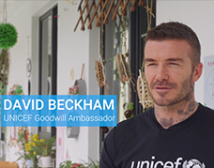'Best interests of the child'
The question of whether or how to protect a subject's identity is an editorial judgment that must be evaluated on a case-by-case basis. In all cases, though, it should be based on the primacy of the ‘best interests of the child.' This standard is the foundation of many national laws governing child protection and an over-arching principle of the Convention on the Rights of the Child.
To evaluate the need for identity protection of at-risk children, it helps to ask: If this were your child, would you permit her or his identity to be revealed in the context of a specific abuse, or with the potential for stigma?
Besides serving as a useful rule of thumb, this question promotes a view of every child – personally known or not, far away or close to home – as worthy of the same rights as all other children.
When identities are revealed
The principle of a child's best interests also recognizes instances where risks are weighed and found to be in favour of publishing identities. This is the case with child advocates who choose to take a public stance on a potentially high-risk subject. Some former child soldiers, for example, testify openly to the brutality of their past experiences.
In such cases, children have a right to express themselves and participate in issues that directly affect them. Still, efforts must be made – especially when children remain in the community where the abuse occurred – to ensure that they understand the implications of their decision to speak out.
In the end, UNICEF's position comes down to this: Protection against harm must be the over-riding premise for all interactions with children, including reporting.
About the authors: Ellen Tolmie is UNICEF's Senior Photography Editor. Rebecca Fordham is UNICEF's Media Specialist for Child Protection.
































